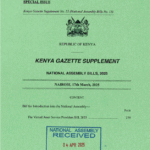Dr Punita Chowbey, Sheffield Hallam University
In the wake of the COVID-19 crisis, the United Nations (UN) identified what it called a “shadow pandemic” of domestic violence against women. The UN includes in its definition of domestic violence what it refers to as “economic violence”, which it explains as: “making or attempting to make a person financially dependent by maintaining total control over financial resources, withholding access to money, and/or forbidding attendance at school or employment”.
I have been researching economic violence in India, where it surged during periods of social distancing and lockdowns. This not only resulted in the reduction of safe spaces for women and girls, but also trapped them in a space where they were more easily economically exploited. My research suggests that the COVID lockdowns spawned a whole new class of economic abuse of women in India.
Economic abuse tends to involve controlling and coercive behaviour by a woman’s partner and sometimes their in-laws or other family members, threatening her economic security and potential for self-sufficiency. While economic abuse can take many forms, there are three main types: sabotage, restriction and exploitation.
Sabotage usually involves interfering in a woman’s access to money or in their work. Restriction is about controlling how women use money. And exploitation most often means a male partner or relative living off a woman, or insisting all debts go in her name.
My previous research has revealed unique forms of abuse that are embedded in specific sociocultural practices in India. For example, exploitation of streedhan (jewellery and movable or immovable assets given to a woman before and during her marriage) and dowry practices (money and gifts demanded by the groom and in-laws at the time of and after marriage) have been identified as a common form of economic abuse in south Asian marriages. If a woman lives with her husband’s family they may control her assets or income where multiple generations live together.
Economic abuse of women
As part of our research in a city in Bihar, India’s third-most populous state in the east of the country, we made a 20-minute documentary: Spent: Fighting Economic Abuse in India, featuring five of the 76 women we spoke to. All but two were mothers with dependent children. We found that economic abuse was common irrespective of class, caste, religion, education or employment status.
One woman we feature, Nitya, wasn’t allowed to work by her family. Instead she was forced to perform domestic chores around the clock. This typically included being required to cook seven or eight courses at dinner. At the same time, her husband mocked her for not working. Nitya told us he’d say: “You don’t work, what’s the point of your education?”
Some abusive husbands also refused to pay any household costs relating to women and children – especially girls. Another of our interviewees, Nilu, told us how her husband had refused to pay the medical bills relating to their daughter’s birth and tried to force her back to work with a month-old baby. She was forced to stay at her mother’s home to seek help.
Zubaida’s husband got angry whenever she asked for money for necessities, while spending a large amount of money on his own clothes and shoes.
In addition, these women reported abuse that was embedded in cultural practices, such as demands for dowry. Nilu told us her husband pretended that he was not getting paid and made her father pay for everything in her house on a regular basis. Her father agreed to ensure that Nilu was not thrown out of her marital home.\
ALSO READ: Tunnel collapse: Ambulances on standby as Indian rescuers near 41 trapped workers
New abusive tactics
Our interviews suggested that abusive men’s bad treatment of their spouses tended to worsen during the pandemic. And the special circumstances associated with COVID restrictions enabled new forms of economic abuse of women, given the special circumstances associated with lockdown.
The pandemic gave abusive men new ways of controlling and abusing their wives’ finances. In lockdown – and with the isolation that entailed – a family’s financial affairs became dependent on access to the internet, usually via shared mobile phones.
One of the women we talked to, Lakshmi – a high-ranking corporate employee – said she was duty-bound to keep her clients’ details confidential. Lakshmi told us her husband took not only her social media and banking passwords but also managed to access her work WhatsApp account, used for communicating with teammates. He started impersonating her online and insulted her superior, which caused her serious problems.
Several other women told us about their male relatives using their logins to clear out their bank accounts. Women also reported loans being taken out in their names, but having no access to money themselves.
Lockdown made it easier to prevent women from accessing their support groups, including their families. Nitya told us of being beaten by her husband, who wouldn’t allow her to speak to her parents.
ALSO READ: India’s top court deflects LGBTQ+ issues
Protection measures
Indian law recognises economic abuse in its Domestic Violence Prevention Act 2005. It includes deprivation of all economic and financial resources and restriction to shared household resources as well as exploitation of women’s own belongings, such as their jewellery and other valuable possessions. But official understanding of economic abuse and its impact on women remains extremely low – both at government level and among professionals and service providers.
It’s a serious problem. Economic abuse has a huge impact on women’s physical and mental wellbeing and has also been shown to have an impact on children’s health and wellbeing
To address economic abuse, there’s an urgent need to have open conversations about money in families and challenge ideas around masculinity and money. More importantly, policy makers and practitioners need to work together to address the role of the state, market and community institutions in facilitating economic abuse by reinforcing gender norms, including in financial transactions.
Dr Punita Chowbey, Senior research fellow, Sheffield Hallam University
*This article is republished from The Conversation under a Creative Commons license. Read the original article.













